“Should we buy a gift for Robin?” I ask.
“You’re acting as if we know Robin,” says my Swedish beau.
“Maybe Robin is lonely and wants a gift.”
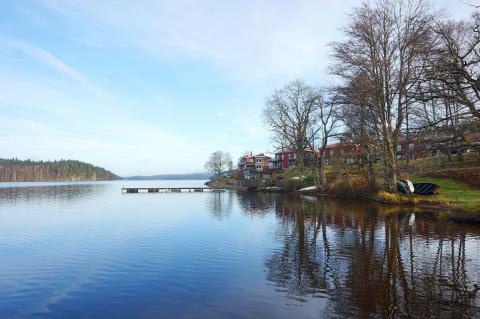
Photo: Dana Ter, Taipei Times
Robin was our AirBnb host in Gothenburg. After three hotels in five days, we thought we’d change things up and stay in a stranger’s house instead. We had become the type of couple whose idea of fun evolved from salsa dancing on a Saturday night to staying home to eat kebab pizza (a Swedish fast food delicacy which is indeed kebab meat on top of a pizza) while watching documentaries of morbidly obese people. And Robin’s sleek, industrial-style loft with vintage posters seemed like the perfect place to do the latter.
When I touched down in Stockholm last month after an epic 36-hour journey, locals said it was the worst time to visit Sweden. The weather is cold, but not cold enough to snow, so the grounds are wet and slushy. Travel guides seem to echo this sentiment. They entice readers with pictures of canal tours during the summer and ski resorts with pristine slopes during the winter. There’s nothing about the months in between.
But who needs all of that when you’ve got a ruggedly handsome Swedish beau, kebab pizza and Netflix, right? On that note, I bring you a travel guide to southern Sweden for 20-something-year-old couples who travel like they’re in their 40s. If you’re looking for a rave guide, well, maybe check Vice.
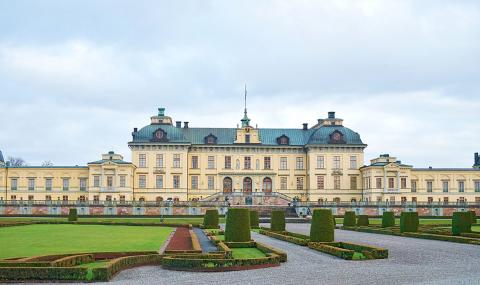
Photo: Dana Ter, Taipei Times
STOCKHOLM, MARITIME CULTURE
Stockholm is synonymous with sailing. Since the Swedish capital consists of many small islands, it’s hard to walk for more than 20 minutes and not be within eyesight of a body of water — and docked boats. There is a ship museum and several ship hotels (not recommended for travelers prone to sea sickness). While ferries run frequently, below-freezing temperatures make it a rather tortuous experience. That being said, it’s easy enough to get around — the metro and bus are fast and punctual with signs in English. Tickets are a little expensive, but there’s a discount if you’re 25 or younger. If you find yourself lost, most locals speak fluent English, so asking for directions isn’t a problem.
The city has no shortage of old hotels with modern interiors. We stayed in three hotels on three different islands — Stallmastaregarden, Skeppsholmen and Hellstens Malmgard. All three hotels were built in the 17th to 18th centuries and revamped with minimalistic, modern decor. There are lots of light yellow and baby blue hues on the buildings’ exterior, and low ceilings on the inside which are made less noticeable through the strategic use of windows. Tiny nooks in the hotel rooms are converted into cozy study corners complete with antique telephones. Breakfast at each hotel is pretty standard — bread, cheese and un-sweetened yogurt.
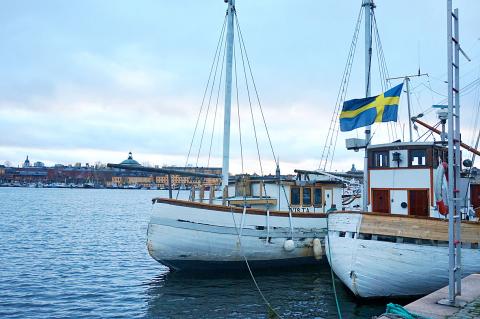
Photo: Dana Ter, Taipei Times
After a late morning walk in the Old Town — which consists mainly of palatial buildings, cobblestone roads and overpriced cafes luring tourists — we cross a bridge to the Vasa Museum. The Vasa was a warship built between 1626 and 1628. It barely made it a few hundred meters before it sank, taking along with it 450 passengers and crew and 64 bronze canons. The remains of the ship were salvaged in the 1950s and became the main display at the museum when it opened in 1990. The ship is a massive entity — about six stories high — and emits a musty odor. Visitors can also see other model ships on display, as well as sculptures of decapitated heads predicting what some of the passengers onboard the Vasa looked like.
A FARM, A BUNKER AND A PALACE
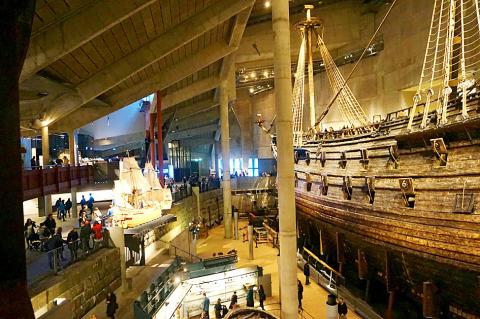
Photo: Dana Ter, Taipei Times
On the same island as the Vasa Museum is Rosendals Tradgard, a biodynamic farm with a greenhouse cafe (we gave the Abba museum and the zoo, both on the island as well, a miss). Although technically in Stockholm, the farm is a relaxing getaway from the city and is also a popular wedding venue during the warmer months. The walk there brings you through a residential area with colorful, spacious houses, a couple of embassies and tall, billowing trees. Since it was the end of fall, the grass was covered with red leaves which crackled as we walked. The farm boasts a wide variety of plant and flower species, while the cafe serves pastries and sandwiches. We decided, however, to lunch at Wardshuset Ulla Winbladh, an old restaurant serving Swedish cuisine, including delectable meatballs with lingonberries.
Back in the northern part of Stockholm is a completely different vibe. Tucked in a quiet road behind a cluster of malls filled with harried Christmas shoppers is Room Escape. The popular roleplay game is part of a global franchise of “escape games,” where teams of two to five people are locked in a room where they must piece together a series of clues to free themselves. We played a similar game in Vietnam, where we were detectives solving a high-profile murder. This time, we were secret agents trapped in a 1980s Cold War-era bunker, saving the world from a nuclear meltdown. The process sounds simple enough — break a few codes, fiddle around with locks and stop a bomb from exploding (we succeeded with eight seconds to spare).
Traveling back in time again, this time to the late 16th century, Drottningholm Palace is another must-see. Situated in the outskirts of Stockholm and easily accessible by bus, the palace is still as a part-time residence for the Swedish royal family. Only certain parts are open for public viewing, but the vast collection of antique furniture and paintings, as well as the surrounding gardens filled with neatly-trimmed shrubs and tree-lined driveways, make it worth a visit.
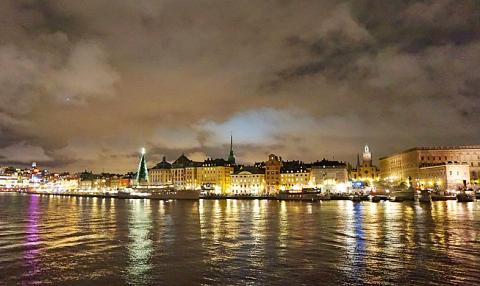
Photo: Dana Ter, Taipei Times
NAAS FABRIKER: SPA TIME
Before heading south to Tollered, we stop at a Systembolaget to stock up on the most important travel item: booze. Due to Sweden’s strict liquor licensing laws, outside of bars and restaurants, alcohol can only be purchased at Systembolagets, or government-owned liquor stores. Bring your ID (you must be 20 or older) when entering one, as they will most likely ask. Stuffing an assortment of Christmas ales and lagers into our suitcases — including the dark and frothy Naas Mork Lager — we board a train for Gothenburg, and then a bus to Tollered.
Our hotel, Naas Fabriker, was an industrial mill in the late 19th century. Much of the red-brick exterior remains the same. The inside of the individual factories are converted into luxurious loft-style hotel rooms, spas and restaurants. Outside by Lake Savelangen are function rooms for company retreats and saunas for hotel guests to enjoy.
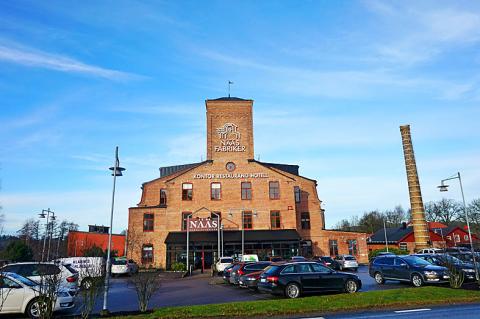
Photo: Dana Ter, Taipei Times
The interior of our deluxe loft room is what I imagine sleek Nordic design to be — minimalistic and tasteful. The windows and curtains stretch two stories up, while the bed overlooks the living room. Woolen blankets are folded neatly on the two sofas and wooden tables give the place a warm touch. There’s also a bar top table in the kitchenette where we promptly unpack our Naas Mork Lagers. The rest of the resort is equally design-savvy, with a mixture of red-brick walls, metal staircases and transparent prisms as elevators.
Dining options are limited, as there isn’t much else around the area, although the herb roasted venison fillet we had for dinner at the hotel was scrumptious and succulent. During the summer, swimming in the lake and hiking in the nearby mountains are popular activities, but in winter, the spa and sauna will suffice. Just walking by the lake is breathtaking enough — the water is so clear that it casts a perfect reflection onto the trees and houses, making it mysterious and inviting at the same time.
GOTHENBURG: JUST LIKE HOME
Surprisingly, our search for accommodation in Gothenburg didn’t yield any satisfying results. There were the usual chain hotels — Radisson Blu, Scandic — but no minimalistic-style industrial lofts or revamped old establishments. For that reason, Airbnb seemed like the best choice.
A 10-minute walk from Gothenburg Central Station, Robin’s loft has high white ceilings and lights that look like they should be inside of a photography studio. There are ample blankets on the L-shaped sofa in the living room and the kitchen is fully equipped with utensils (including napkin holders) making it ideal for cooking.
With the intention of making ourselves feel at home, we shop for meat, cheese, bread and other dinner ingredients from the Saluhallen, or market hall, nearby. Built in the late 19th century, it is currently Gothenburg’s largest market hall and worth a peek inside, even if you are just stopping to buy a coconut-and-avocado smoothie. Individual stalls display fresh produce along with helpful English signs such as “typical Swedish cheese.” Customers must grab a number and wait in line — a system that works well as it ensures that people aren’t stepping on each other’s toes to cut the line. Some of the stalls sell elk and reindeer meat as well.
Gothenburg is also home to the Feskekorka, or fish market (“fish church” is the literal translation), a couple of art museums and the Volvo Museum. The Volvo Museum, which houses over 100 different types of vehicles, not only tells the history of the popular Swedish automobile brand which launched in 1927, but through it, visitors can also get an understanding of the types of cars that were popular during different periods of time. Also on display is a life-size replica of the Volvo XC90 made entirely out of Lego.
After less than 24 hours in Gothenburg, we are on an express train to Copenhagen, Denmark. Seven days in Sweden might not be a long time, but it was enough to appreciate the contrast between city and countryside, old and new. Not to mention the food. Kebab pizza? Yes, please. Surstromming (one of the smelliest fishes in the world)? No, thanks.
As for Robin, our gracious Airbnb host, we didn’t end up buying him a gift (we came to the conclusion that he made a lot of money through Airbnb). Although we did leave behind a bottle beer in the refrigerator for him.
PACK YOUR BAGS:
Getting there
■ Round-trip tickets from Taipei to Stockholm cost around US$900 to US$1,500, and includes one to two layovers (there are no direct flights)
Stay
Stockholm:
■ Stallmastaregarden Hotel (www.stallmastaregarden.se/en), US$140/night
■ Hotel Skeppsholmen (www.hotelskeppsholmen.se/en), US$160/night
■ Hotel Hellstens Malmgard (hellstensmalmgard.se/en/Hellstens_Malmgard), US$105/night
Tollered/Naas:
■ Naas Fabriker (www.naasfabriker.se), US$160/night
Gothenburg:
■ Gothenburg has some good chain hotels like Radisson Blu and Scandic, but AirBnb seems to provide the best accommodation choices (www.airbnb.com/s/Gothenburg--Sweden), US$100-US$160/night
Visit
Stockholm:
■ Room Escape (stockholm.roomescapelive.se)
■ Rosendals Tradgard (www.rosendalstradgard.se)
■ Vasa Museum (www.vasamuseet.se/en)
■ Old Town
■ Drottningholm Palace
Tollered/Naas:
■ Lake Savelangen by Naas Fabriker
■ Summer activities include swimming and hiking
Gothenburg:
■ Saluhallen (Market Hall)
■ Volvo Museum

May 11 to May 18 The original Taichung Railway Station was long thought to have been completely razed. Opening on May 15, 1905, the one-story wooden structure soon outgrew its purpose and was replaced in 1917 by a grandiose, Western-style station. During construction on the third-generation station in 2017, workers discovered the service pit for the original station’s locomotive depot. A year later, a small wooden building on site was determined by historians to be the first stationmaster’s office, built around 1908. With these findings, the Taichung Railway Station Cultural Park now boasts that it has

The latest Formosa poll released at the end of last month shows confidence in President William Lai (賴清德) plunged 8.1 percent, while satisfaction with the Lai administration fared worse with a drop of 8.5 percent. Those lacking confidence in Lai jumped by 6 percent and dissatisfaction in his administration spiked up 6.7 percent. Confidence in Lai is still strong at 48.6 percent, compared to 43 percent lacking confidence — but this is his worst result overall since he took office. For the first time, dissatisfaction with his administration surpassed satisfaction, 47.3 to 47.1 percent. Though statistically a tie, for most

Six weeks before I embarked on a research mission in Kyoto, I was sitting alone at a bar counter in Melbourne. Next to me, a woman was bragging loudly to a friend: She, too, was heading to Kyoto, I quickly discerned. Except her trip was in four months. And she’d just pulled an all-nighter booking restaurant reservations. As I snooped on the conversation, I broke out in a sweat, panicking because I’d yet to secure a single table. Then I remembered: Eating well in Japan is absolutely not something to lose sleep over. It’s true that the best-known institutions book up faster

In February of this year the Taipei Times reported on the visit of Lienchiang County Commissioner Wang Chung-ming (王忠銘) of the Chinese Nationalist Party (KMT) and a delegation to a lantern festival in Fuzhou’s Mawei District in Fujian Province. “Today, Mawei and Matsu jointly marked the lantern festival,” Wang was quoted as saying, adding that both sides “being of one people,” is a cause for joy. Wang was passing around a common claim of officials of the People’s Republic of China (PRC) and the PRC’s allies and supporters in Taiwan — KMT and the Taiwan People’s Party — and elsewhere: Taiwan and